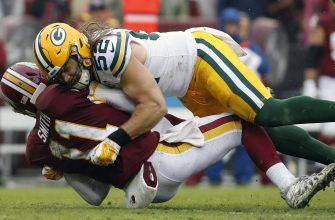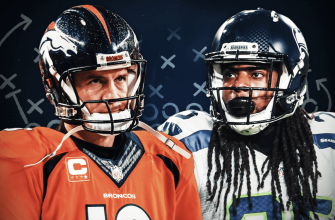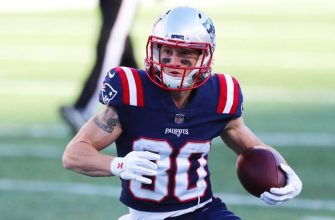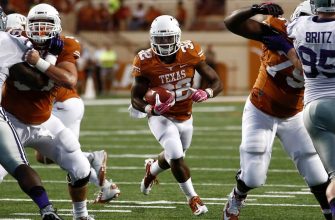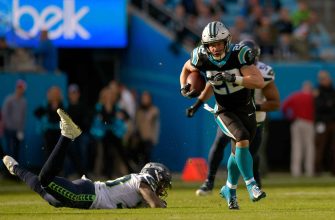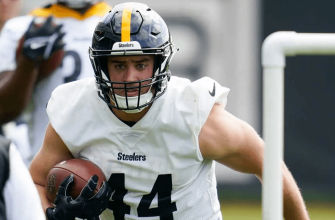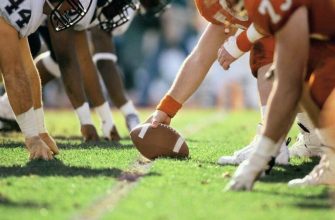A flanker is a position in rugby union football that forms part of the forward pack. Flankers play in the channels between the number eight, scrum half, locks and wingers and are considered part of the loose forwards. Their main responsibilities are to win possession through ‘turnovers’ such as tackling players or stealing the ball at rucks and mauls. The position requires speed, strength and agility as flankers need to cover a lot of ground around the field.
The flanker position gets its name from being positioned on the ‘flank’ or side of the scrum, pack and team. They bind onto the scrum behind the number eight but in front of the locks. There are two flankers in a rugby team – blindside and openside flankers. Their positioning indicates which side of the scrum they pack down. The openside flanker packs down on theopenside of the scrum, closest to where the ball is fed in, while the blindside flanker packs down on the opposite blindside of the scrum.
History of the Flanker Position
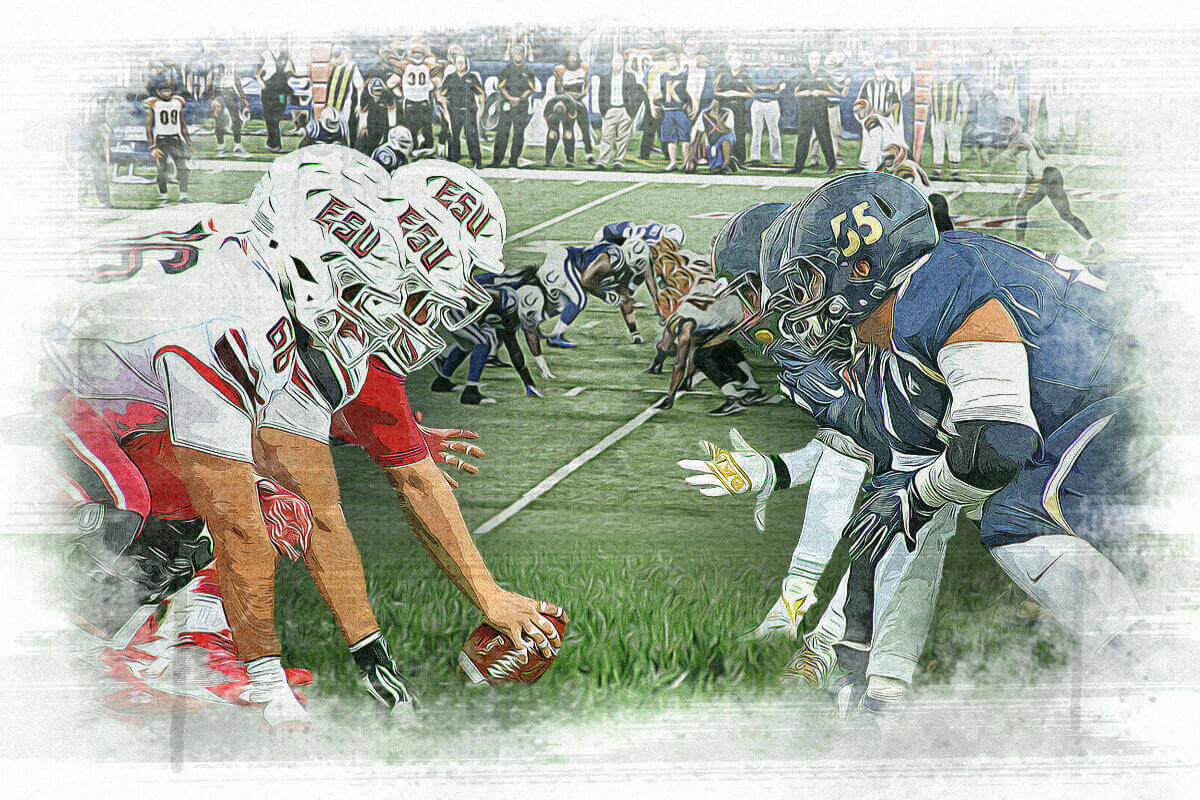
The flanker position was first introduced in rugby union during the early 1900s as a variation of the traditional wing forward position. Back in those days, teams deployed eight forwards packed closely together in the scrum, with the wing forwards stationed in the loose at the side of the pack.
Over time, teams began to experiment with the wing forward’s positioning by stationing one of them further away from the scrum in an attempt to cover more ground. This modified wing forward eventually became known as the “flanker” as they operated on the flanks of the scrum.
The first documented instance of a flanker being used was by the New Zealand “Originals” team that toured the British Isles in 1905. The tourists deployed George Smith as a left-side flanker at various stages throughout the tour. While met with skepticism at first, the ploy proved to be successful as Smith’s speed, tackling and ball skills added a new dimension to the Originals’ play.
From these humble beginnings, the flanker position gradually gained acceptance and evolved into a key role in the modern game. Over the ensuing decades, flankers became vital in providing mobility at the breakdown, defensive capabilities out wide, and acting as auxiliary scrum-halves. Flankers are now seen as indispensable figures in a rugby team’s structure.
Role and Responsibilities
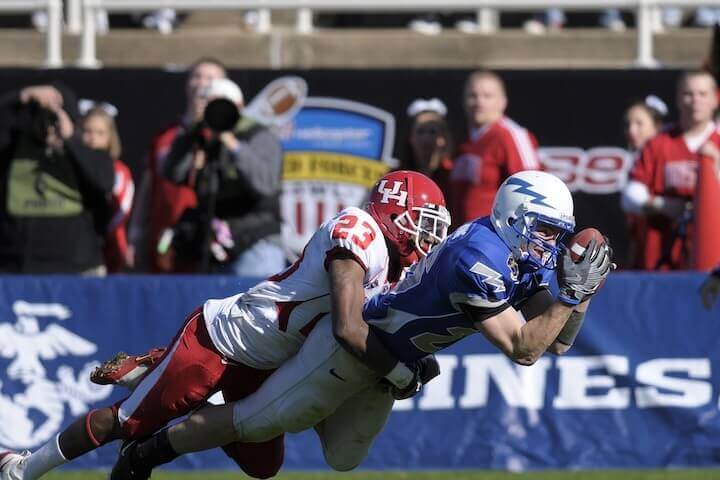
The flanker position in football has several key duties and responsibilities that are crucial to a team’s success. The main role of a flanker is to provide support in open play and be part of the attacking unit.
Here are some of the main duties and responsibilities of a flanker:
- Being a primary ball carrier – Flankers often act as a main ball carrier during open play, charging upfield with the ball in hand. Their running and evasion skills are utilized to gain territory.
- Making tackles and winning turnovers – Flankers need to be strong tacklers and excel at winning back possession. Their defensive duties are important to prevent the opposition from advancing upfield.
- Supporting the scrum – When scrums are formed, the flankers bind on either side and push forward to provide stability and drive. Flankers aid in moving the scrum forward.
- Assisting in lineouts – Flankers may participate in lineouts to gain possession. They can lift teammates or act as a receiver to secure the ball.
- Linking with backs – Flankers need to effectively link with backs once possession is won, either via passing or running in support. This bridge between forwards and backs is vital in launching attacks.
- Tracking ball and providing backup – Flankers should track the movement of the ball across the field. Their endurance and speed allows them to cover ground and be in support.
- Generating quick ball – Flankers are tasked with trying to generate quick ball for their team at rucks and mauls. Their breakdown skills are important here.
So in summary, flankers have a diverse skillset to fulfill their main duties – winning possession, linking play, providing support, and enabling attacks. They are invaluable contributors on the field.
Skills and Attributes
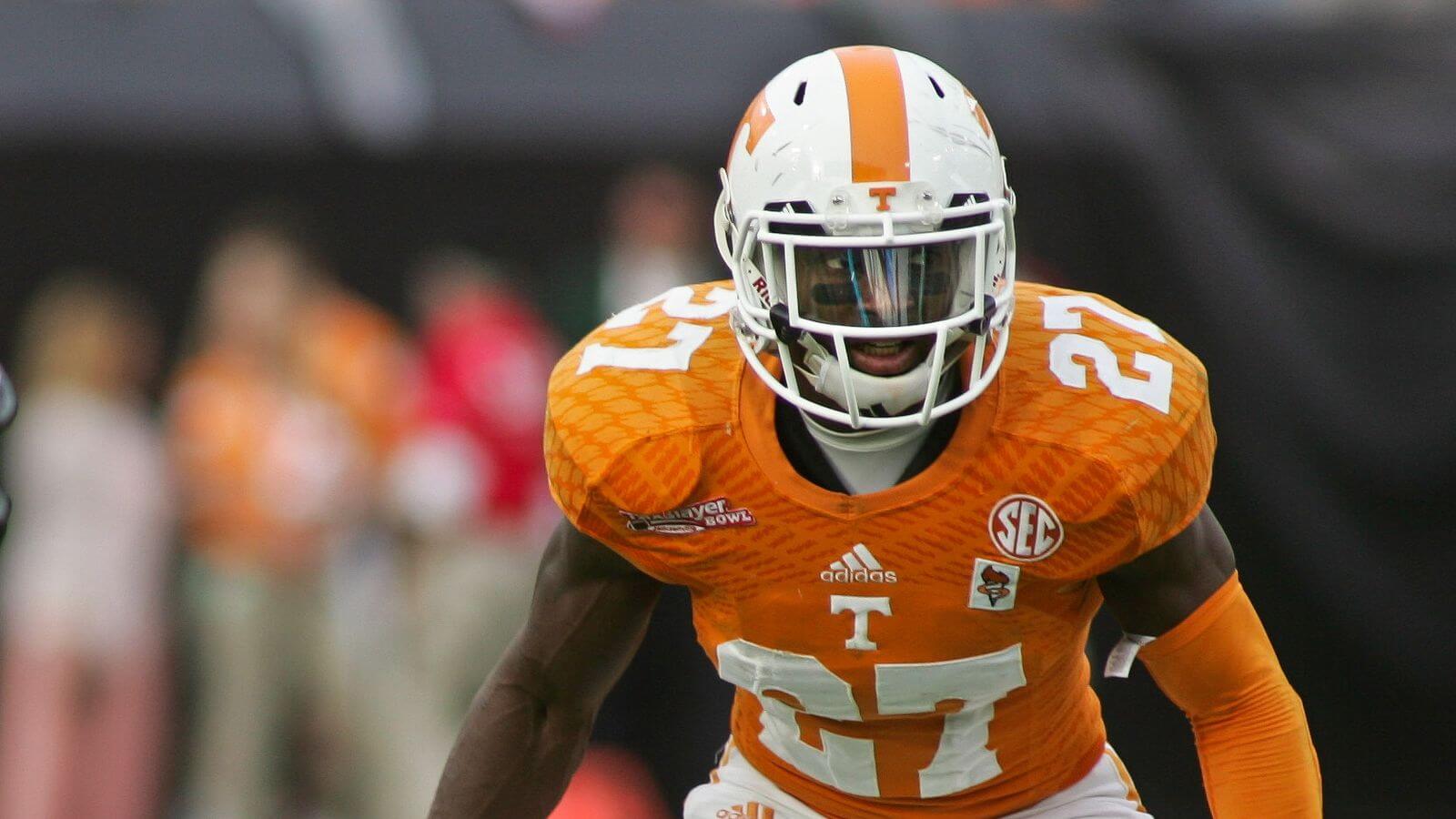
Flankers require a diverse skillset to succeed in their multifaceted role on the pitch.
Some key skills and attributes include:
Speed and Agility – Flankers need to be able to sprint up and down the touchline to support attacking and defensive play. The ability to change direction quickly and evade tackles is essential.
Tackling – Strong tackling skills are vital to win back possession, especially for open-side flankers. Flankers make a high number of tackles per game.
Rucking – Flankers need to be proficient at rucking to secure possession at the breakdown. Power and technique are required to drive over the ball.
Lineout jumping – Many flankers are chosen for their ability to jump and disrupt opposition lineouts. Height and vertical leap help flankers win lineout balls.
Passing – Good handling skills allow flankers to offload in contact and keep continuity in attack. Accurate passing also helps link play between forwards and backs.
Strength – Flankers need upper and lower body power to fend off defenders, drive in contact, and scrummage effectively. A sturdy frame withstands physical contests.
Work rate – Incredible stamina, motor and work ethic allow flankers to cover every blade of grass. Fitness and conditioning are paramount.
Rugby intelligence – Reading play and making good decisions is critical for flankers. Game sense and awareness put flankers in the right spots to impact games.
Different Types of Flankers
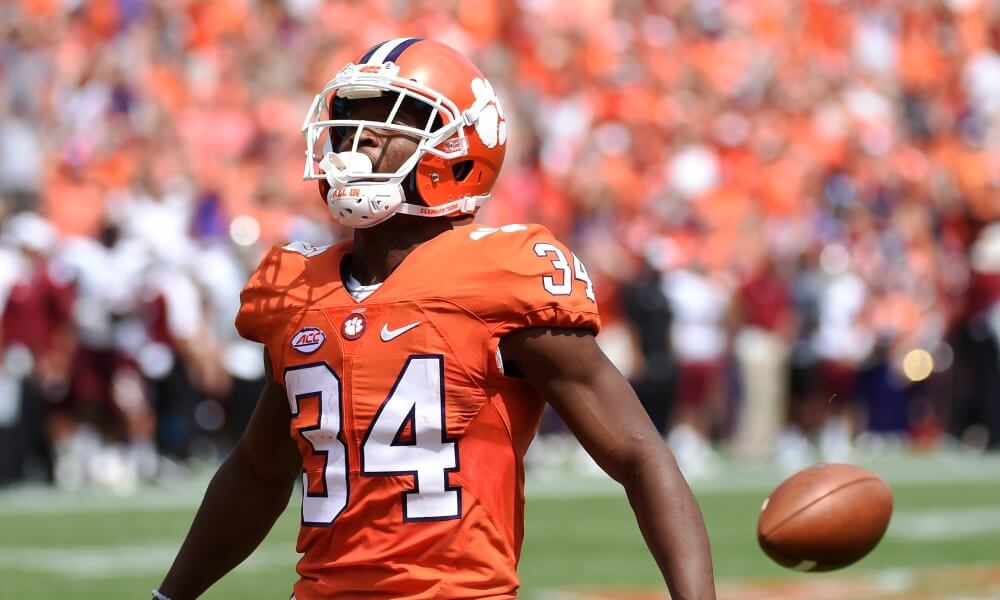
The two main types of flankers in rugby are blindside and openside flankers. They occupy different positions in the scrum and have slightly different roles:
Blindside Flanker
The blindside flanker (number 6) packs down on the side where the opponent’s scrum-half usually feeds the ball into the scrum. They are typically the bigger and stronger of the two flankers.
Responsibilities of the blindside flanker include:
- Securing possession in the scrum and providing drive
- Making tackle assists on the blindside and stopping attackers
- Carrying the ball in open play with brute force
- Providing a lifter option in the lineouts
Famous blindside flankers include Jerome Kaino, Pablo Matera, and Scott Fardy.
Openside Flanker
The openside flanker (number 7) packs down on the side where their own scrum-half feeds the ball into the scrum. They are usually quicker and more agile than the blindside.
Responsibilities of the openside include:
- Contesting and disrupting opposition ball at the breakdown
- “Poaching”
- Covering the openside of the pitch in defense
- Linking with backs in attacking play
Famous openside flankers include Richie McCaw, David Pocock, and Michael Hooper.
The different body types and positioning of the two flankers complement each other. Excellent communication and synergy between them is vital for the pack to function effectively.
Relationship with Number 8
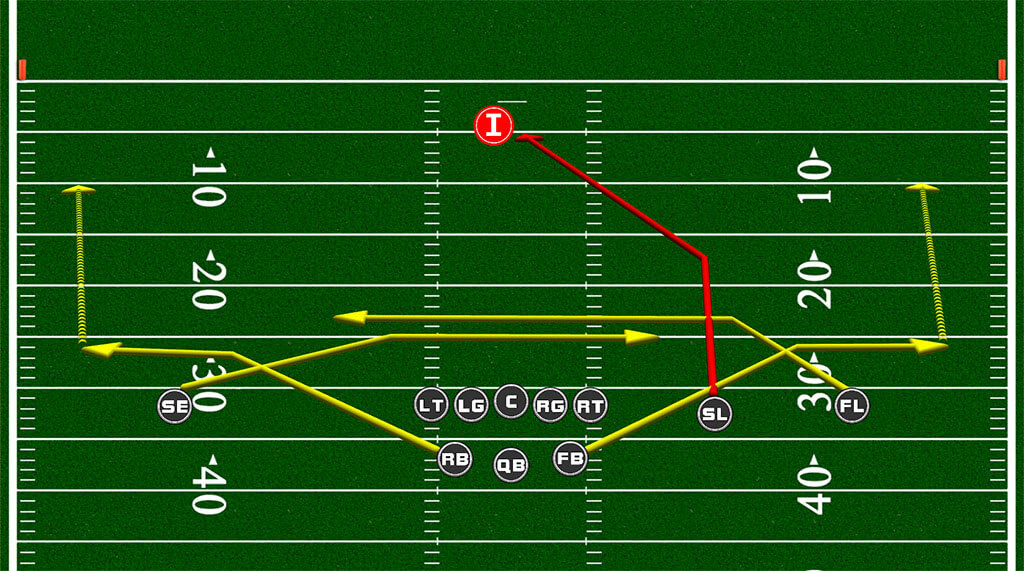
The flanker has a close relationship with the number 8 position in rugby. The number 8 often binds onto the scrum behind the flankers, forming a back row unit. Flankers and the number 8 must work cohesively together as a trio both in attack and defense.
On attack, the flankers look to provide support to the number 8 who will often carry the ball forward, either by being available as a passing option or targeting opposition players at the breakdown. The unit aims to maintain quick ball through their work at the rucks. The flankers can also exploit spaces around the fringes when defenses overcommit to the number 8.
In defense, flankers and the number 8 attempt to tackle ball carriers in tandem and aggressively compete to win turnover possession at the ruck. Their defensive role involves pressuring opposition scrum-halves, disrupting attacking patterns, and marking potential receivers close to the breakdown area. Communication between the back row is crucial to ensure they track runners and cover spaces effectively.
The combination play between the flankers and number 8, both as ball carriers and in their support roles, is often a pivotal part of generating attacking momentum for their team. Their collective physicality and work rate is vital in gaining an advantage at the contact area. When the back row unit fires in unison, they can dictate the tempo and flow of a match through their dynamic running and rucking.
Famous Flankers
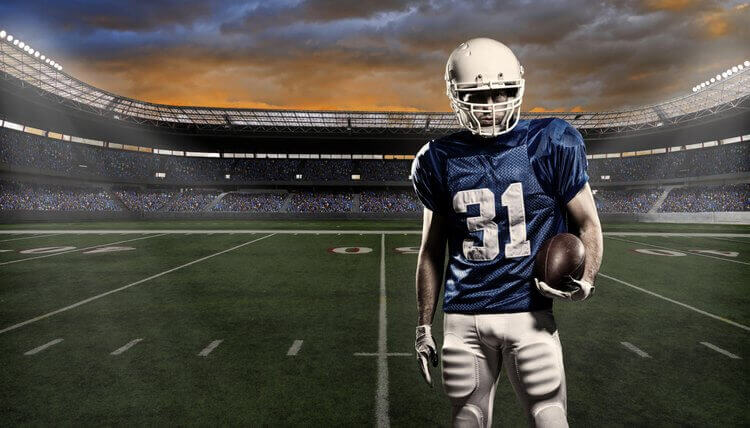
The flanker position has featured some all-time great rugby talents over the years.
Here are some of the most notable flankers in football history:
- Richie McCaw (New Zealand): Arguably the greatest openside flanker ever, McCaw captained New Zealand to two World Cup titles. Renowned for his leadership, work rate, and ability to excel at the breakdown.
- David Pocock (Australia): A superb modern era openside flanker known for his ball-stealing capabilities at the ruck. Key member of the Wallabies team that reached the 2015 World Cup final.
- Michael Jones (New Zealand): Legendary openside flanker from the dominant All Blacks teams of the late 1980s. Combined pace, power and endurance with an incredibly high work rate.
- Lawrence Dallaglio (England): Powerful blindside flanker and captain of England’s 2003 World Cup winning side. Physically imposing with excellent handling skills.
- Schalk Burger (South Africa): Hard-hitting Springbok blindside flanker and World Cup winner in 2007. Huge carrier renowned for robust defense and aggression at the breakdown.
- Serge Betsen (France): Skilled openside flanker who was France’s top tackler at the 2003 World Cup. Extremely mobile and tenacious in winning turnovers for his team.
- Josh van der Flier (Ireland): Emerging Irish openside who was a standout at the 2019 World Cup. Excelled at forcing penalties through breakdown turnovers and strong tackling.
Flanker Tactics
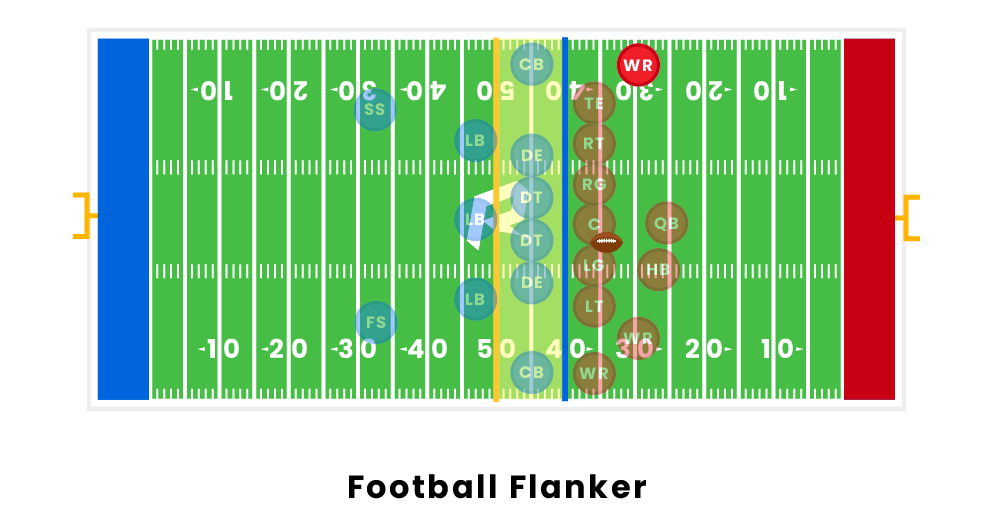
Flankers are often utilized in creative tactics to exploit weaknesses in the opposition’s defense.
Here are some common tactics involving flankers:
- Overlaps – The flanker starts behind the ball carrier and runs around them, providing an option for a pass to get around the edge of the defense. This tactic relies on the flanker’s pace and evasive running.
- Cutback passes – The flanker makes a hard run toward the touchline, drawing defenders with them. They then cut back sharply toward the middle of the field and receive a pass from the ball carrier, looking to break through the now misaligned defense.
- Loops – The flanker starts wide and makes a looping run behind the first line of defense to receive a pass in a gap and break the defensive line. This move relies on timing and the flanker hitting the gap at pace before defenders can react.
- Blindside runs – The flanker positions themselves on the blindside of the ruck and makes a sudden explosive run when the ball is moved, catching defenders by surprise who cannot see them.
- Quick lineout – From a lineout near the touchline, the hooker throws the ball directly to the flanker who has detached. The flanker then looks to drive upfield immediately before the defense is set.
- Kick chase – Flankers are often the fastest forwards, so they are used to chase down box kicks and apply immediate pressure on the returner. Their speed allows them to turn kicked possession into attack.
Using flankers creatively in these types of plays is key to keeping defenses off balance and creating try scoring opportunities. Flankers who can time their runs well and beat defenders one on one in space are hugely valuable attacking weapons.
Flankers vs Other Positions
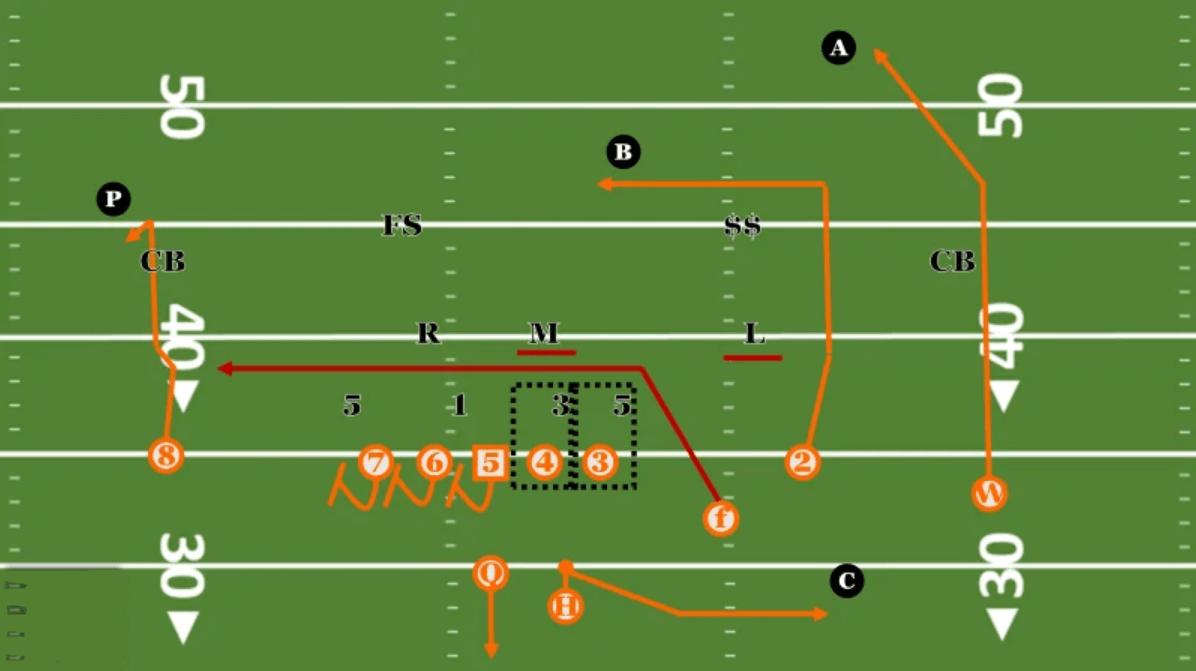
The flanker position in rugby has some similarities and differences compared to other positions like wings.
- Like wings, flankers play in the forwards and are known for their speed and agility. However, flankers play closer to the breakdown and rucks than wings, who stay wider.
- Flankers and wings both need to be strong runners and defenders, but flankers take on more of a tackling role as they make a high number of tackles per game. Wings focus more on finishing tries.
- While wings primarily play out wide on the edges, flankers play more of a hybrid role between the forwards and backs. They roam the width of the field rather than staying on the wing.
- Flankers battle for possession at rucks, mauls, lineouts, etc. Wings do not have the same responsibilities at the breakdown points of the game.
- The flanker positions require a broader all-around skillset with strength, tackling, running, rucking, and lineout skills. Wings specialize more in pace, evasion, and try-scoring ability.
- While wings may make more long busting runs, flankers cover more total ground in a match as they get involved in more phases of play.
- In summary, flankers have a more well-rounded physical and technical game than specialized wings. They play a unique hybrid role compared to other forward and back positions.
Conclusion
Flankers play a critical role in rugby union, tasked with doing much of the hard work around the fringes of the field. As we’ve covered, flankers have a diverse range of responsibilities, from winning breakdowns and making tackles, to carrying the ball and supporting the backs.
The key attributes of successful flankers include power, speed, handling skills, and rugby intelligence. While there are different types of flankers, they share many core duties. Flankers must work closely with the number 8 to be effective as a back row unit.
Throughout rugby history, many exceptional flankers have emerged. Iconic players like Richie McCaw, David Pocock, and Michael Hooper have shown what can be achieved in the position with the right mix of talent, determination and leadership.
In conclusion, flankers are the jack-of-all-trades of the rugby team. Their role requires an immense work rate around the park, with the ability to influence play in attack and defense. The best flankers combine technical prowess with unwavering commitment and courage. While often unsung heroes, great flankers are invaluable contributors to their team’s success.


